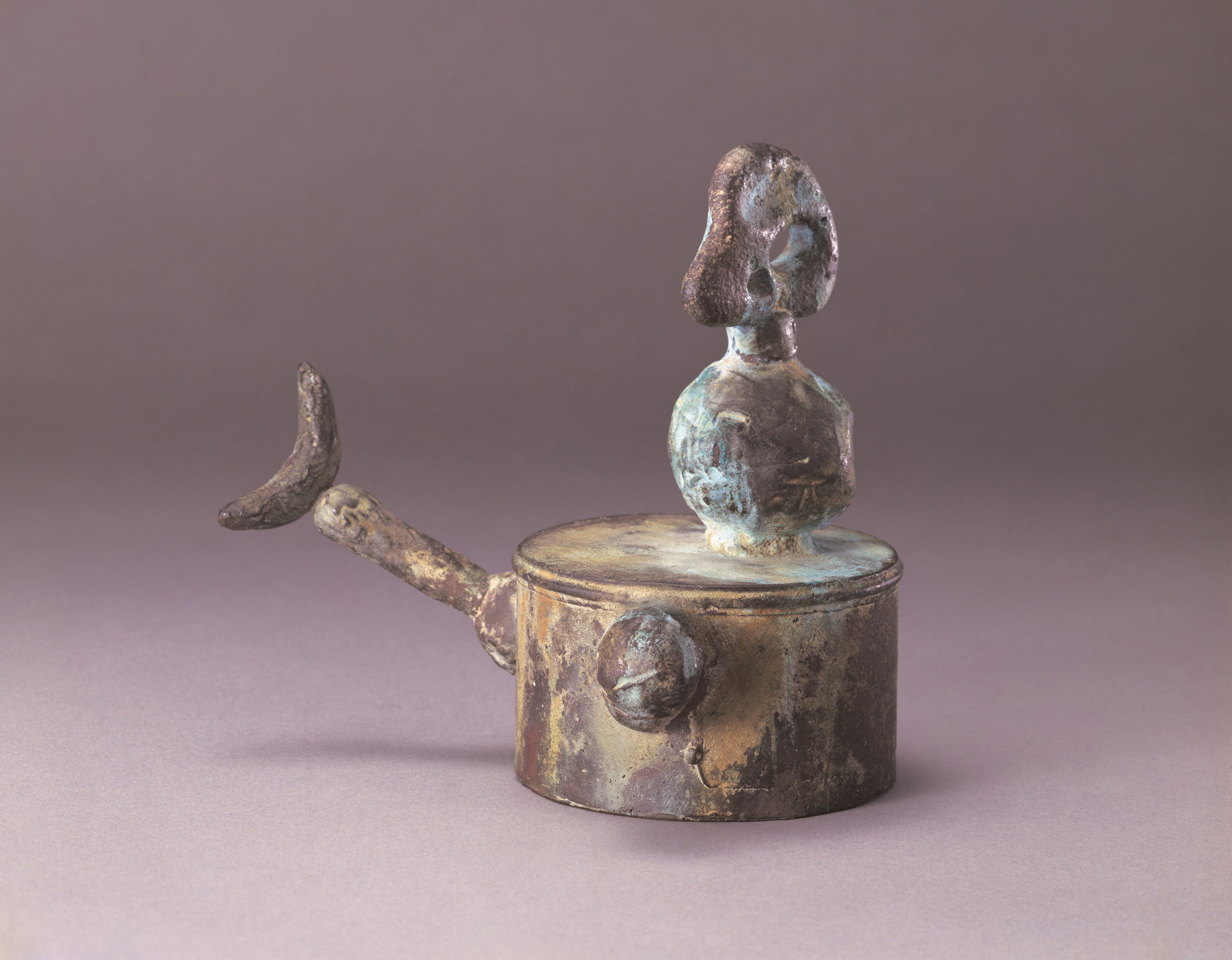In 1927, Joan Miro (1893-1983) claimed he wanted to "assassinate" painting. Eventually he hit upon sculpture as a means of doing it. The 14 small-scale sculptures in "Sculptures of Joan Miro from the Asahi Beer Collection" at the Asahi Beer Oyamazaki Villa Museum of Art, focus on the mid-1960s to early '80s during which Miro deployed ideas developed in his earlier painting career.
As a fauve painter in his teens in Barcelona, Miro went to Paris in 1920, met Picasso, then was ushered into the surrealist circle in 1923 before being formally admitted as a member in 1924. His "dream paintings" from 1925 were intensely colored and with forms made into calligraphic signs that seemingly floated, ungrounded, in pictorial space.
The characterization of his painted forms subsequently shifted from the surrealist unconscious to formlessness in a few years, spurred by the ethnographer Julien Michel Leiris, who called Miro's "dirtied" calligrammatic paintings "graffiti," "tantalizing like faded walls on which generations of poster-hangers, allied over centuries of drizzle, have inscribed mysterious poems." Around 1930, Miro's slaughter of painting took the form of little collage constructions made from items plucked from garbage cans. The few paintings he concomitantly produced were called "anti-paintings."



















With your current subscription plan you can comment on stories. However, before writing your first comment, please create a display name in the Profile section of your subscriber account page.